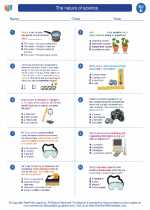Endoplasmic Reticulum
The endoplasmic reticulum (ER) is a complex network of membranes found in eukaryotic cells. It plays a crucial role in the synthesis, folding, modification, and transport of proteins and lipids.
Types of Endoplasmic Reticulum
There are two main types of endoplasmic reticulum: rough endoplasmic reticulum (RER) and smooth endoplasmic reticulum (SER).
Rough Endoplasmic Reticulum (RER)
The RER is studded with ribosomes on its cytoplasmic surface, giving it a rough appearance under a microscope. It is primarily involved in the synthesis of proteins that are either secreted from the cell or inserted into the cell membrane.
Smooth Endoplasmic Reticulum (SER)
The SER lacks ribosomes and appears smooth under a microscope. It is involved in lipid synthesis, detoxification of drugs and poisons, and calcium ion storage.
Functions of Endoplasmic Reticulum
- Protein Synthesis: The RER is involved in the synthesis of proteins, while the SER is involved in lipid synthesis.
- Protein Folding and Modification: The ER helps in the proper folding and modification of proteins before they are transported to their final destinations.
- Detoxification: The SER plays a key role in the detoxification of drugs and poisons by modifying them to make them more water-soluble and easier to excrete.
- Calcium Ion Storage: The SER stores and releases calcium ions, which are important for muscle contraction and other cellular processes.
Study Guide
Here are some key points to remember when studying the endoplasmic reticulum:
- Understand the structure and composition of the endoplasmic reticulum.
- Differentiate between the rough and smooth endoplasmic reticulum in terms of appearance and function.
- Learn about the various functions of the endoplasmic reticulum, including protein and lipid synthesis, detoxification, and calcium ion storage.
- Understand the importance of the endoplasmic reticulum in maintaining cellular homeostasis and overall cell function.
By understanding the structure and functions of the endoplasmic reticulum, you will have a solid foundation for comprehending the inner workings of eukaryotic cells.
.◂Science Worksheets and Study Guides Fifth Grade. The nature of science

 Worksheet/Answer key
Worksheet/Answer key
 Worksheet/Answer key
Worksheet/Answer key
 Worksheet/Answer key
Worksheet/Answer key
